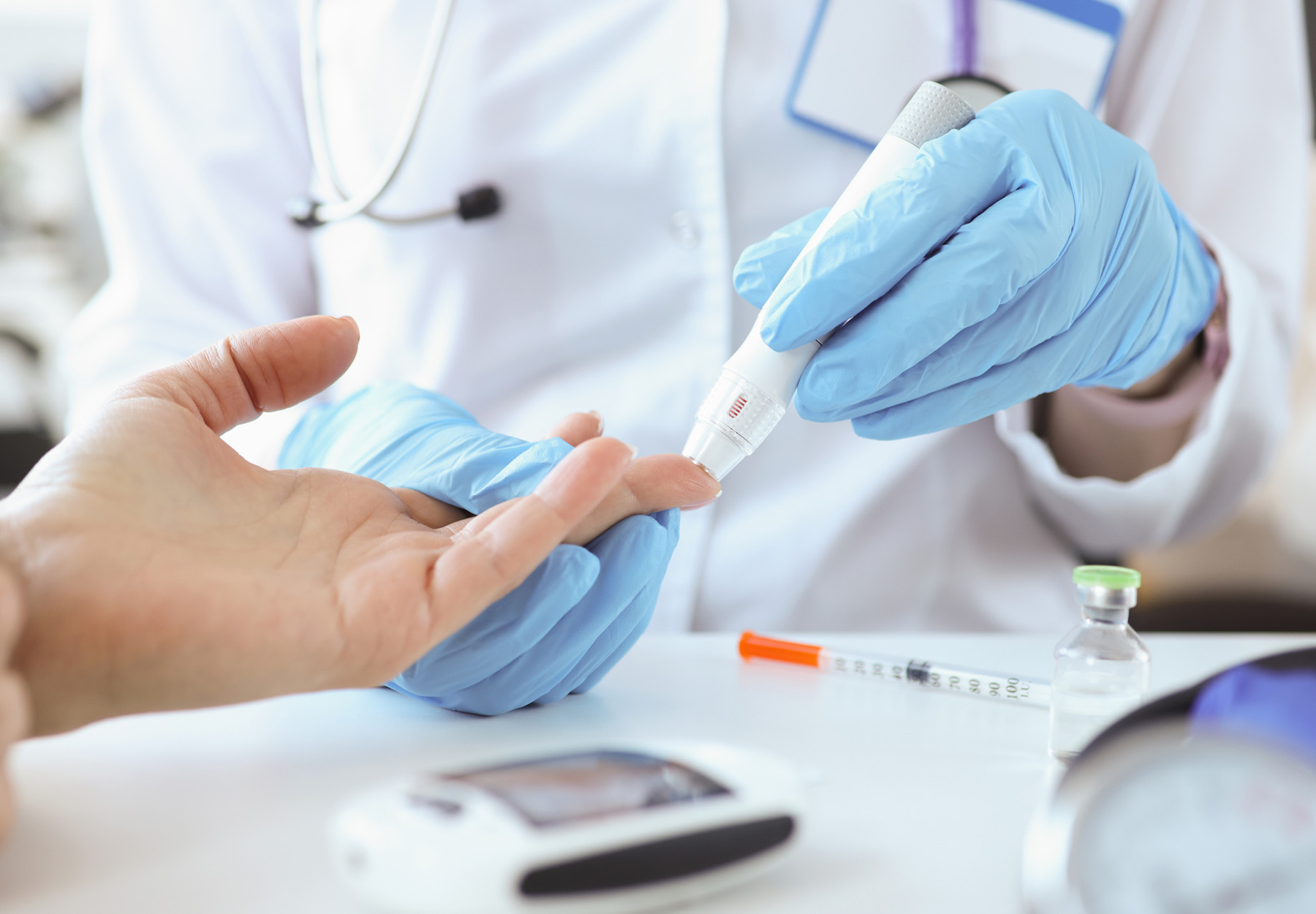Leveraging COVID-19 Testing Infrastructure Can Boost Diabetes Screening
A new study suggests that this is a viable idea, particularly in the context of diabetes screening in a Latinx community.

The COVID-19 pandemic has generated an unprecedented surge in laboratory testing across all segments of society, including community-based efforts targeting historically marginalized areas and populations. Why not take advantage of this momentum and the grassroots testing infrastructure generated by COVID-19 to increase utilization of other kinds of important screening tests? A new study suggests that this is a viable idea, particularly in the context of diabetes screening in a Latinx community.
The Diagnostic Challenge
The recent pandemic has exposed the inequities in the US health system and their adverse impacts on Latinx and other socioeconomically disadvantaged groups. One manifestation of these inequities is the disproportional impact of diabetes on Latinx communities. According to US Centers for Disease Control and Prevention (CDC) statistics, Latinx persons in the US have a 65 percent higher risk of being diagnosed with type 2 diabetes than non-Latinx White persons. Once diagnosed, they are also more likely to experience diabetes-related complications including vision loss, kidney failure, and death.
The diabetes-related incidence and outcome disparities within the Latinx community are the product of barriers to health care access, including lack of health insurance, direct and indirect costs of showing up for medical appointments, language differences, immigration concerns, and fear of deportation.
Of course, these same barriers also apply to COVID-19 testing. So, it is not surprising that the Latinx community has suffered during the pandemic at disproportionate rates. A report from the Institute for Health Metrics and Evaluation (IHME) found that the risk of dying from COVID-19 for Latinx people (IHME uses the term “Hispanic”) is up to 6.9 percent in the 40 US states with more than 10 deaths among Hispanic people.
The Study
While laying bare the inequities in the health system, the COVID-19 pandemic also provided a blueprint for overcoming them. The key ingredients, mobilization of community partnerships to build trust and use of telehealth, home testing, and other modalities to develop an infrastructure for delivering services outside of traditional brick-and-mortar health care facilities that are so difficult for disadvantaged groups to access. In theory, this very same approach could also work with other chronic diseases, such as diabetes. The problem is that the idea has received little attention.
With this in mind, a group of researchers from San Francisco set out to evaluate whether leveraging COVID-19 testing infrastructure and community trust developed during the COVID-19 pandemic to develop a testing infrastructure for diabetes would improve diabetes outcomes
among low-income, Latinx persons. The researchers worked with Unidos en Salud, a community-academic-public health partnership providing low-barrier COVID-19 testing, vaccination, and social support services tailored to the needs and which had won the trust of San Francisco’s Latinx community. “We hypothesized that a theory-informed, multidisease rapid testing strategy could leverage this trust and our existing COVID-19 testing infrastructure situated outside of the formal health care system to identify a large number of Latinx persons with prediabetes and diabetes who may face substantial barriers to care engagement,” the researchers wrote.
The study was performed at an outdoor, community-based COVID-19 testing site at a transport hub in San Francisco’s heavily Latinx Mission neighborhood from August 1 to October 5, 2021, utilizing staff of predominantly Spanish speakers. The strategy: Integrate rapid hemoglobin A1c testing for diabetes screening into the established community-based COVID-19 testing program. They then evaluated the reach, acceptability, feasibility, and effectiveness of the strategy.
The Study’s Findings
Published in JAMA Network Open on May 26, the study found that 923 (13.9 percent) of all clients’ tests received rapid hemoglobin A1c testing, the large majority (95.7 percent) of whom were tested for both COVID-19 and hemoglobin A1c level; 5,708 clients (86.1 percent) declined hemoglobin A1c testing and were tested for COVID-19 only. The researchers also compared the characteristics of persons who accepted to those who declined diabetes testing and found that the former were more likely:
- To be older (median [IQR] age, 44.8 [35.7-55.6] vs 38.5 [29.0-50.4] years);
- To be Latinx (763 of 923 [82.7 percent]);
- To have a household income of less than $50,000 per year (450 individuals [81.2 percent] vs 2,409 individuals [66.0 percent]); and
- Not to have health insurance (381 individuals [47.2 percent] vs 1,858 individuals [39.9 percent.])
Notably, among clients tested for diabetes, 176 (47.1 percent) had little-to-no preexisting diabetes-specific knowledge, only 129 (30.1 percent) had been previously tested for diabetes, and 27 (6.4 percent) had previously been diagnosed with diabetes; Latinx clients were less likely to report prior diabetes testing.
Factors affecting clients’ decision to get tested at the Unidos en Salud site included:
- The convenient location (2,052 [38.5 percent]);
- The fact that the tests were free services (873 [16.4 percent]); and
- A recommendation from a trusted friend, colleague, or family member (641 [12.0 percent]).
Among clients receiving it, the most common reason given for accepting hemoglobin A1c testing: “I might as well since I’m already getting tested for COVID-19.”
Among all persons who underwent rapid hemoglobin A1c testing, 53.9 percent had normal hemoglobin A1c levels, while 33.9 percent met the criteria for prediabetes and 12.2 percent met the criteria for diabetes. There was a higher prevalence of prediabetes (34.6 percent versus 30.6 percent) and diabetes (12.7 percent versus 10.0 percent) among Latinx clients compared with non-Latinx clients. Latinx clients accounted for 84.4 percent of prediabetes and 85.8 percent of diabetes diagnoses, respectively.
Takeaway
Integrating testing for diabetes and other chronic conditions into community-based free COVID-19 programs can be effective in increasing screening rates among historically disadvantaged socioeconomic groups with limited access to health services. “Leveraging pandemic-related public health responses represents an important opportunity for engaging socioeconomically disadvantaged populations into care for diabetes,” the researchers concluded.
Subscribe to Clinical Diagnostics Insider to view
Start a Free Trial for immediate access to this article